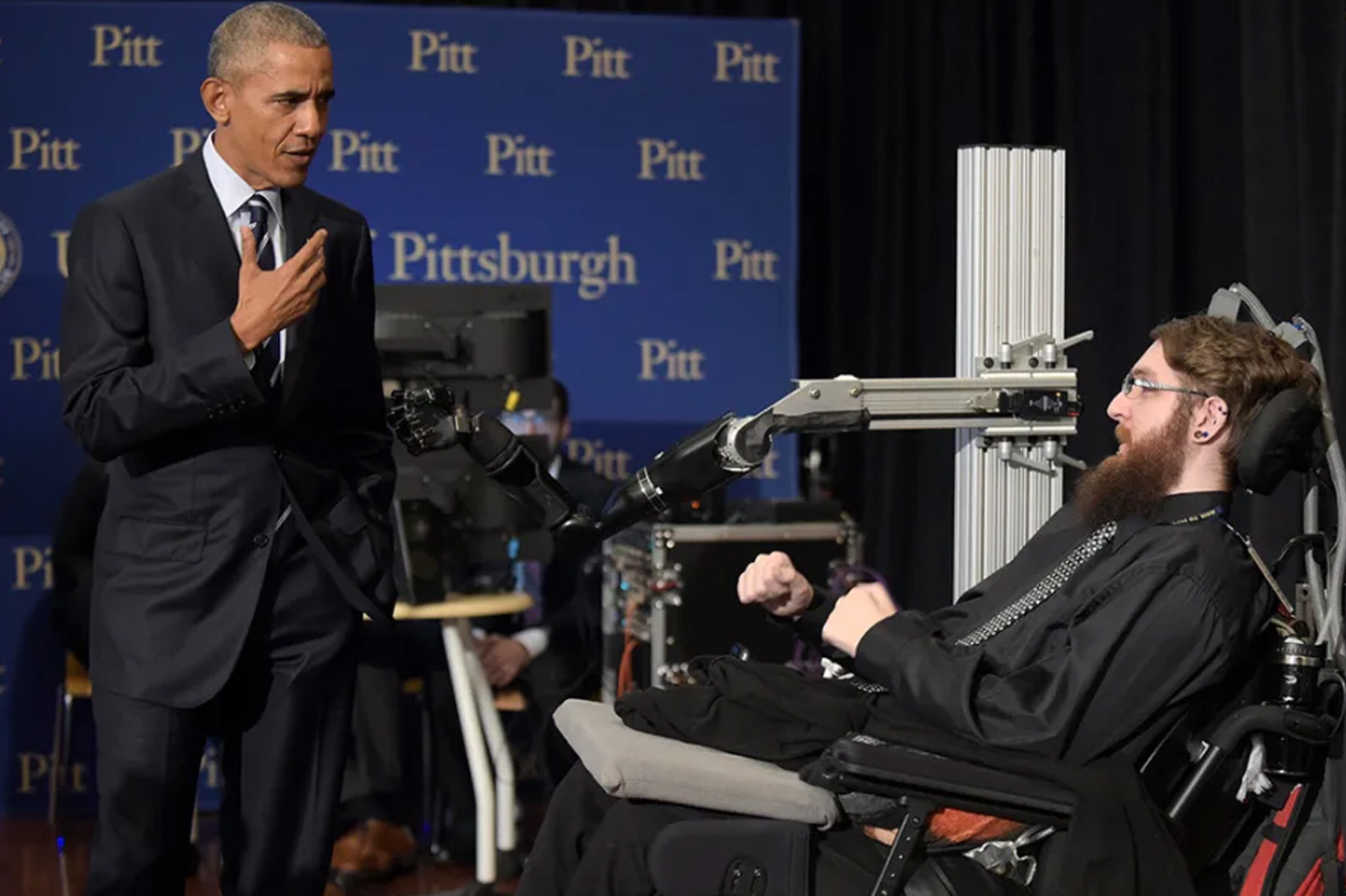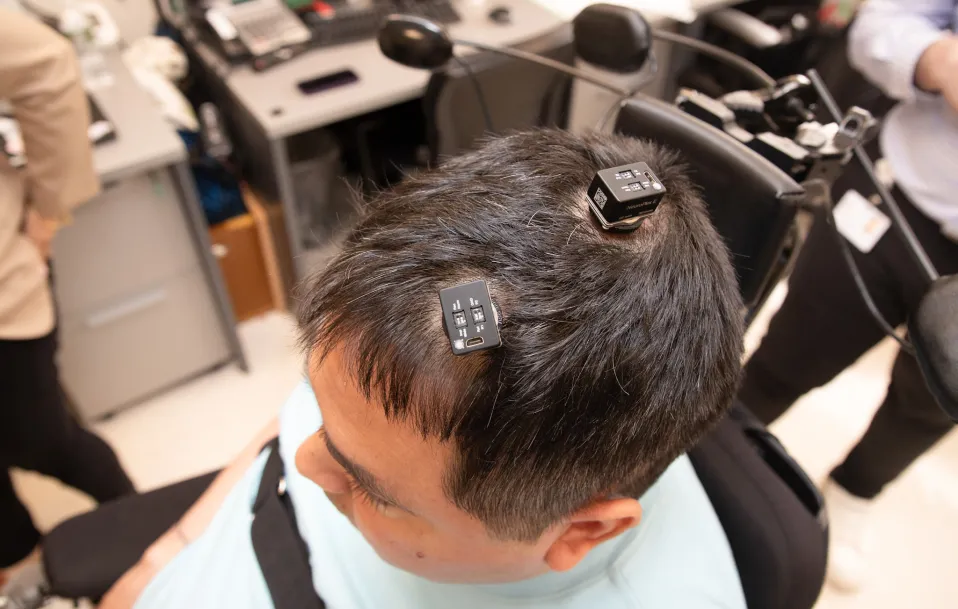While a presidential meetup is a once-in-a-lifetime moment for many, a handshake in 2016 between 30-year-old Nathan Copeland and President Barack Obama felt extra special.
For starters, Copeland, paralyzed from the chest down after a car accident, was using a robotic hand – one controlled by two brain implants in his motor cortex.
With the on-brain nanoelectrodes, Copeland could restore the connection between brain and body. His thoughts moved the arm so that he could, quite literally, reach out to the President, to shake his hand.
A second set of electrodes, located in the sensory cortex, gave Copeland another breakthrough: the ability to feel it.
Black Rock Neurotech, a company based in Salt Lake City, UT, is creating brain computer interfaces that allow quadriplegic and tetraplegic patients to control computers, type at 90 characters a minute, and, well, fist-bump the president.
The company’s tiny, 4 x 4 mm, 96-needle electrode is placed on the part of the brain that you’re trying to influence, said the company’s co-founder – the visual cortex to support vision recovery, for example, or the motor cortex to restore movement.
“So, the electrode is picking up the signals from the neurons, sending it out to the prosthetic hand so the prosthetic hand now moves, and Nathan was able to do things with that hand: collect some balls on the table, grab a glass, or fist bump and shake Barack Obama’s hand,” said Marcus Gerhardt, CEO of Black Rock Neurotech.
On the Here’s an Idea podcast, available on Monday, Gerhardt spoke more about the presidential handshake and other memorable reactions from patients who have used the technology.
See the excerpts below.
Here’s an Idea: What was the interaction between the President and Nathan like?
Marcus Gerhardt: When he shakes his hand, sensors in the prosthetic arm sends signals back into Nathan’s brain, telling him what the temperature is of the hand. His prosthetic hand is shaking, and he comments on this and says: “Mr. President, your hands are very warm.”
Barack Obama responds and says: “I’m a lot more nervous about meeting you than you are about meeting me.”
Here’s an Idea: A sense of feeling was restored.
Marcus Gerhardt: We have been able to restore a sense of feeling. If you ask tetraplegic patients, often what comes at the very top of the list, even before being able to walk again, is that they would love to feel again — you know, feel what it’s like to be hugged by one of their loved ones. So, this is just a very profound impact that this technology is having on human patients.
Here’s an Idea: I imagine there must be just so many memorable reactions for someone who regains these senses. Can you recount any kind of those?
Marcus Gerhardt: You’d have to expand this podcast to several days. It’s the most rewarding part of my work: seeing on these individuals what some of these discoveries do.
There’s Jan Sherman suffering from a neurological disorder that degenerates her body within months, to the point where she is paralyzed from the neck down. She uses the prosthetic arm, and she brings a bar of chocolate to her lips.
Her face, at that moment, you know, is priceless. And then she says:
“Now it’s a small bite for me and a big bite for mankind.”



